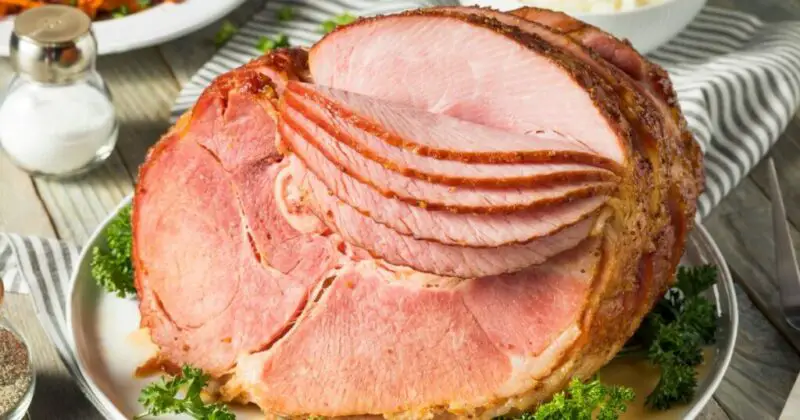When it comes to cooking a delicious gammon, many home chefs often prepare more than they need for a single meal. In such cases, storing cooked gammon in the refrigerator can be an ideal option for later consumption. However, storing and reheating gammon has its own set of challenges that need to be addressed for optimal flavor and safety.
In this article, we will explore tips and best practices for storing cooked gammon in the refrigerator.
Factors Affecting Storage Life of Cooked Gammon
Before we get into the storage specifics, let us examine the key factors that affect the storage life of cooked gammon.
Temperature Control Considerations
Temperature control is perhaps the essential aspect of storing cooked food safely. To preserve your cooked gammon’s flavor and texture, it is crucial to store it at temperatures between 32°F-45°F (0°C -7°C). You want to avoid temperature fluctuations, which can lead to food spoilage and bacterial growth. Make sure that your refrigerator maintains a steady temperature.
Moisture Control Considerations
Excess moisture retention is another factor that affects the shelf-life of cooked gammon. Moisture can potentially breed bacteria that can cause food poisoning or spoilage. To reduce moisture retention in stored gammons:
- Blot them with paper towels before you put them in containers
- Use airtight containers while storing.
Preparing Cooked Gammon for Refrigeration
Proper preparation of your cooked gammons before storing them is essential for prevente any bacterial contamination.
Cooling Process for Successful Storage
Once you cook your ham, let it sit at room temperature until it cools down slightly before storing it—Shredding or slicing the meat before putting it away also helps long-term storage; however, slicing is more advisable since exposing shredded ham may dry quickly than solid slices.
Packaging and Labeling Best Practices
When storing your cooked gammon in the refrigerator, make sure it is in an appropriately sized container. If the container is too big, it can lead to excess air exposure, causing moisture loss and spoilage. It is recommended that you cover gammon with plastic wrap or properly seal them in small airtight containers.
For best results:
- Store sliced gammons separately in Ziplock bags,
- Label each packaged gammon with the date stored and other pertinent information.
Storing Cooked Gammon in the Refrigerator
After preparing your cooked ham correctly for storage, putting it in the right part of your fridge is crucial for success:
Location in the Refrigerator Where Gammon Should Be Placed
The ideal location for storing cooked gammons inside your fridge is on a shelf. Avoid storing them directly on top of other food items since this increases their chance of being bumped around when taking other stuff from the fridge.
Considerations for Long-term vs. Short-term Storage
It depends on how long you plan to store your ham before consuming it again. For short-term storage (1-2 days), covering the gammons wholly with aluminum foil can be sufficient; however, long-term storage requirements will call for vacuum packing machines that remove all air from around meat decreasing bacterial growth rate.
Reheating Stored Gammon Safely and Deliciously
The following are tips to ensure that reheated stored gammon stays safe and delicious:
Preparation Tips for Reheating Gammon
While reheating stored gean must be achieved quickly while maintaining its quality, using either a microwave or stovetop can achieve maximum results.
Use of Microwave
On a microwave-safe dish, place only one slice at a time; cook on high heat for 30 seconds over preselected intervals noting that overcooking causes dehydration making meat tough.
Use of Stovetop
With a frying or grill pan on medium heat, place the gammon slices and flip for two minutes until lightly browned.
Recommended Cooking Time and Temperatures
Using a meat thermometer to check reheating temperature can prevent overcooking. It is best if the internal ham temperature ranges from 145°F-160°F (63°C -71 °C).
Length of Time Cooked Gammon Can Be Stored in the Refrigerator
Cooked gammons that are adequately stored can be safe for up to five days when refrigerated at appropriate temperatures between 32°F-45°F (0°C -7°C). Note that certain variables that influence length of storage including prep and packaging, expiration dates, cryovac covers and freshness effects.
Signs that Stored Gammon Has Gone Bad
Stored cooked gammons with foul odors when opened from their package or seem slimy and mushy should be discarded; additionally, any change in color may render it unsafe for consumption.
Conclusion
Storing cooked gammon is not as simple as putting them directly into the fridge. Temperature control, moisture retention, size limitations, and proper labeling are essential to ensure maximum shelf life while maintaining their flavor and texture. By following the above tips, your leftover gammons can still retain their delicious taste for future eating with little fuss while keeping everyone’s stomachs happy.
Q&A
- Q: Can I store cooked Gammon in the refrigerator for several days? A: Yes, you can! Cooked Gammon can be stored in the refrigerator for up to 4-5 days.
- Q: Should I wrap the cooked Gammon before storing it in the fridge? A: Absolutely! After letting it cool down completely, wrap your cooked gammon with cling film or aluminum foil before placing it in the refrigerator.
- Q: Is it safe to reheat cooked Gammon after refrigerating it? A: Yes, you can reheat your stored cooked Gammon. Ensure that you thoroughly reheat it until steaming hot before consuming.
- Q: How do I know if my stored cooked gammon has gone bad? A: If your cooked Gammon is slimy, has a foul smell or odd texture, then throw it away as these are signs of spoilage. Always use your instincts when checking whether food has gone bad or not!




